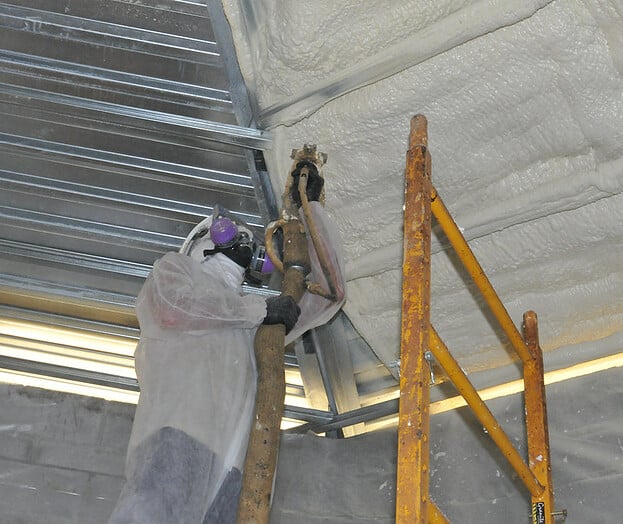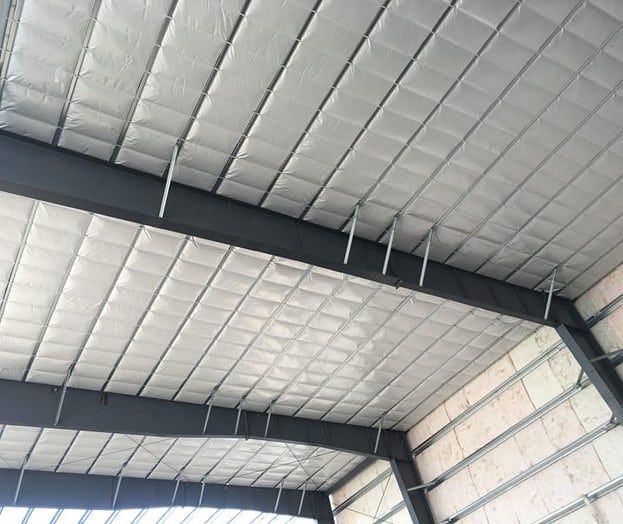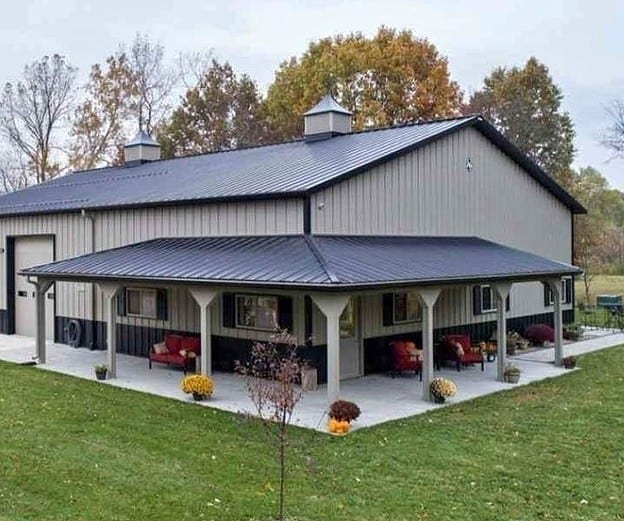If you’re planning to build or renovate a barndominium, choosing the right insulation is crucial to ensure energy efficiency and save on energy bills. With so many insulation options available, it can be overwhelming to choose the right one that meets your specific needs.
In this comprehensive guide, we’ll answer the burning question: What is the most energy-efficient insulation for a barndominium? We’ll explore the various types of insulation, their pros and cons, and how to choose the best insulation for your barndominium.
So let’s dive in and explore the world of insulation!
What is the most energy-efficient insulation for a barndominium?
The most energy-efficient insulation for a barndominium is spray foam insulation. Spray foam insulation provides a high R-value, which measures the insulation’s ability to resist heat flow. The higher the R-value, the better the insulation’s ability to prevent heat transfer. Spray foam insulation has an R-value of 6.5 per inch on average, which is higher than other types of insulation.
Spray foam insulation is also airtight, which means it seals off any gaps or cracks in your walls, ceiling, or roof. This prevents air leaks, which can lead to energy loss and increased energy bills. Spray foam insulation also provides superior soundproofing and moisture control, making it a great choice for barndominiums.

However, spray foam insulation is more expensive than other types of insulation, and it requires professional installation. But the long-term energy savings and improved comfort make it a worthwhile investment.
Types of insulation for barndominiums
There are several types of insulation options for barndominiums. Let’s explore the most common types:
Fiberglass insulation
Fiberglass insulation is one of the most common types of insulation used in homes and buildings. It comes in batts or rolls and is made of tiny glass fibers. Fiberglass insulation is affordable and easy to install, making it a popular choice for DIYers.
However, fiberglass insulation has a lower R-value than other types of insulation, and it’s not airtight, which means it doesn’t provide superior energy efficiency.
Cellulose insulation
Cellulose insulation is made of recycled paper and is treated with fire retardant chemicals. It has a higher R-value than fiberglass insulation and is more eco-friendly.
However, cellulose insulation is not airtight, and it can settle over time, reducing its effectiveness.
Spray foam insulation
As mentioned earlier, spray foam insulation is the most energy-efficient insulation for barndominiums. It provides superior energy efficiency, soundproofing, and moisture control. However, it’s more expensive than other types of insulation and requires professional installation.
Radiant barrier insulation
Radiant barrier insulation is a reflective material that’s installed in your attic or on your roof. It reflects heat away from your home, reducing heat transfer and keeping your home cool in the summer. Radiant barrier insulation is a great choice for hot climates.
However, radiant barrier insulation is not effective in colder climates, and it doesn’t provide soundproofing or moisture control.
How to choose the best insulation for your barndominium

Choosing the best insulation for your barndominium depends on several factors, including your budget, climate, and personal preferences. Here are some factors to consider:
R-value:
The R-value of insulation is a measure of its resistance to heat flow. The higher the R-value, the better the insulation’s ability to prevent heat transfer. When choosing insulation for your barndominium, consider the climate in your area and choose an insulation with an appropriate R-value.
Airtightness:
Airtightness is important for energy efficiency. Insulation that is airtight prevents air leaks, which can lead to energy loss and increased energy bills. Spray foam insulation is the most airtight insulation option, but other types of insulation can be made airtight with the use of air barriers.
Soundproofing:
If you plan on using your barndominium as a workshop or living space, soundproofing may be a concern. Spray foam insulation provides superior soundproofing, but other types of insulation can also provide soundproofing with the use of additional materials, such as acoustic panels.
Moisture control:
Moisture control is important for preventing mold and maintaining indoor air quality. Spray foam insulation provides superior moisture control, but other types of insulation can also be made moisture-resistant with the use of additional materials, such as vapor barriers.
FAQs:
Q: How much does spray foam insulation cost?
A: The cost of spray foam insulation varies depending on the size of your barndominium and the type of spray foam insulation used. On average, spray foam insulation can cost between $1.50 to $3.50 per square foot.
Q: Can I install insulation myself?
A: Some types of insulation, such as fiberglass insulation, can be installed by DIYers. However, spray foam insulation requires professional installation.
Q: How much can I save on energy bills with energy-efficient insulation?
A: The amount you can save on energy bills with energy-efficient insulation depends on several factors, including the climate in your area, the size of your barndominium, and your energy usage. On average, homeowners can save up to 20% on energy bills with energy-efficient insulation.
Conclusion:
Choosing the most energy-efficient insulation for your barndominium is crucial for maximizing energy efficiency and saving on energy bills. While spray foam insulation is the most energy-efficient insulation option, other types of insulation can also provide energy efficiency, soundproofing, and moisture control with the use of additional materials. Consider your budget, climate, and personal preferences when choosing insulation for your barndominium, and don’t hesitate to consult with a professional for guidance.



Recent Comments